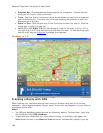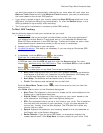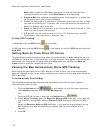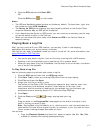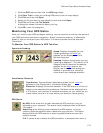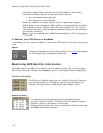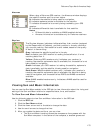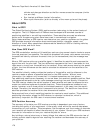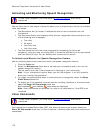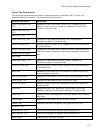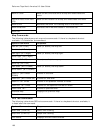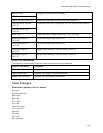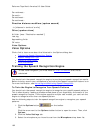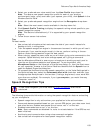DeLorme Topo North America 9.0 User Guide
176
shrinks and changes direction as the Sun moves across the compass (similar
to a sun dial).
• Sun rise/set and Moon rise/set information.
• Moon cycle information (such as the day of the moon cycle and the phase).
About GPS
What is GPS?
The Global Positioning System (GPS) applies modern technology to the ancient basics of
navigation. The U.S. Department of Defense has developed and launched a series of
positioning satellites in an orbiting constellation. These satellites are used as reference
points much the same way stars have been used in conventional navigation.
Using these satellites, a GPS receiver can determine your position anywhere on the globe.
GPS provides accurate information about coordinate position, elevation, speed, and
direction of travel. Many people have discovered the benefits of GPS for tracking vehicles,
recording routes, and much more.
How Does GPS Work?
The GPS constellation consists of 24 satellites, each carrying several atomic clocks to ensure
the most accurate time possible. The satellites broadcast low-power radio waves containing
the satellite's identity code and the exact time (to the nanosecond) that the message was
sent.
When a GPS receiver picks up a satellite signal, it identifies the satellite and compares the
signal time with its own clock. The time difference represents the time it has taken for that
radio wave to travel from the satellite to the receiver. Since radio waves travel at the speed
of light, the time difference can be used to calculate the distance from the satellite to the
GPS receiver.
The satellite's identity code provides the location of the satellite, and the distance to the
receiver creates a sphere of possible locations for the GPS receiver. Without more
information, the receiver only knows that it is located somewhere on that sphere.
Two additional satellites are necessary to narrow down the receiver's possible position. Each
of these satellites sends a similar radio message containing time and identity information.
The GPS receiver checks the orbital location of each satellite and uses the elapsed time to
create two additional spheres of possible locations. These three spheres intersect at two
points; however, one of these points is eliminated because it is far away from the earth's
surface. Therefore, the second point is assumed to be correct. The data from these three
satellites provides the receiver with a two-dimensional location.
Data acquired from a fourth satellite pinpoints the receiver's exact location. This additional
positioning information allows the GPS receiver to calculate its elevation, which is
particularly important for GPS users in mountainous locations.
GPS Position Accuracy
The accuracy of the data your GPS receiver provides is dependent upon many factors,
including the quality of your equipment. A low-quality clock within the receiver decreases
the accuracy of your location. The atmosphere, the ionosphere, and the number of channels
your receiver can handle all affect the accuracy of your system. Consult your GPS hardware
manuals for information on how your receiver adjusts for errors.
Any buildings, natural structures, or heavy foliage that obstruct the GPS antenna's view of
the sky prevent satellite signals from reaching the receiver and decreases the accuracy of
your position.



